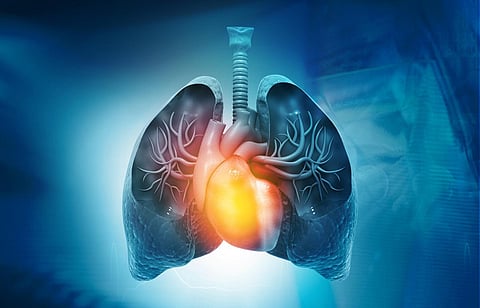Bradycardia is a condition where your heart beats slower than normal—typically fewer than 60 beats per minute in adults. While a slow heart rate may be normal and healthy for some, especially athletes, the different types of bradycardia may cause symptoms and health problems in others.
Learn more about the most common symptoms of bradycardia, why they occur, who is most at risk and what treatment options are available.
Common symptoms of bradycardia
Fatigue and weakness
What it is: Feeling unusually tired or weak, even after getting plenty of rest
Why it happens: When your heart beats too slowly, it does not pump enough oxygen-rich blood to your muscles and other parts of your body. This lack of oxygen can leave you feeling drained and lacking energy, even during simple activities, despite getting good sleep and rest.
Dizziness, lightheadedness and syncope (fainting spells)
What it is: Experiencing sudden dizziness or the sensation that you might faint
Why it happens: A slow heart rate can reduce blood flow to the brain, which can cause dizziness or a lightheaded feeling. In severe cases, this could lead to fainting (syncope) if the brain isn’t getting enough oxygen.
Shortness of breath
What it is: Difficulty catching your breath, even during mild activity or while at rest
Why it happens: Bradycardia can cause a decrease in the amount of oxygen being delivered to your organs and tissues including your lungs, decreasing the amount of oxygen exchange. Plus, decreased blood flow from the heart also causes fluid to back up into the lungs, creating a sensation of drowning. When your body senses it’s not getting enough oxygen, it triggers a feeling of breathlessness as it tries to compensate.
Chest pain
What it is: A feeling of discomfort or pain in your chest, which may feel like pressure, squeezing or tightness
Why it happens: The heart’s slower pace may even cause insufficient blood flow to the coronary arteries that supply the heart muscle. This can lead to chest pain, similar to the pain experienced during angina, a condition caused by reduced blood flow to the heart.
Confusion or memory problems
What it is: Having trouble concentrating, thinking clearly or experiencing memory lapses
Why it happens: When the brain isn’t receiving enough oxygenated blood due to a slow heart rate, cognitive functions can suffer. This may manifest as confusion, difficulty focusing or short-term memory issues.
Who is most at risk of bradycardia?
Bradycardia can affect anyone, but it is often considered a disease of aging. Here are some factors that may increase the risk of bradycardia:
Older adults: As people age, the heart’s electrical system can wear down, leading to a slower heart rate.
Heart disease: Conditions like coronary artery disease, heart attack or previous heart surgery can damage the heart’s electrical pathways, increasing the risk of bradycardia.
Medications: Some medications, particularly those used to treat high blood pressure or heart conditions, such as beta blockers or calcium channel blockers, can slow down the heart rate.
Electrolyte imbalances: Low levels of potassium, calcium or sodium in the blood can disrupt the heart’s electrical signals.
Sleep apnea: This condition, where breathing repeatedly stops and starts during sleep, can lead to bradycardia, particularly during sleep.
Thyroid problems: An underactive thyroid (hypothyroidism) can slow down the body’s processes, including the heart rate.
Lyme disease: In areas of the United States where certain types of ticks are prevalent, tick-borne diseases such as Lyme disease can affect people performing outdoor activities such as hiking. One of the manifestations of Lyme disease is a conduction block, causing bradycardia.
Treatment options for bradycardia
Treatment for bradycardia depends on its cause, severity and the symptoms it produces. Some people with bradycardia may not need treatment, particularly if it doesn’t cause any symptoms.
However, when treatment is necessary, options may include the following.
Medications: If a medication is causing bradycardia, your doctor may adjust the dosage or prescribe a different one.
Lifestyle changes: Managing underlying conditions like sleep apnea or thyroid problems can help. This might involve using a continuous positive airway pressure (CPAP) machine for sleep apnea or taking medication to regulate thyroid function.
Pacemaker: In cases where bradycardia is due to a problem with the heart’s electrical system, a pacemaker may be recommended. A pacemaker is a small device implanted under the skin that sends electrical signals to the heart to keep it beating at a normal rate.
As a cardiology fellow at Montefiore Medical Center, I’ve seen that bradycardia can lead to a variety of symptoms, ranging from mild to severe, depending on how much it impacts blood flow and oxygen delivery throughout the body. Recognizing the symptoms and understanding why they occur can help you seek timely medical advice. If you’re at risk of bradycardia or experiencing symptoms, it’s important to talk to your doctor about the best way to manage your heart health.


